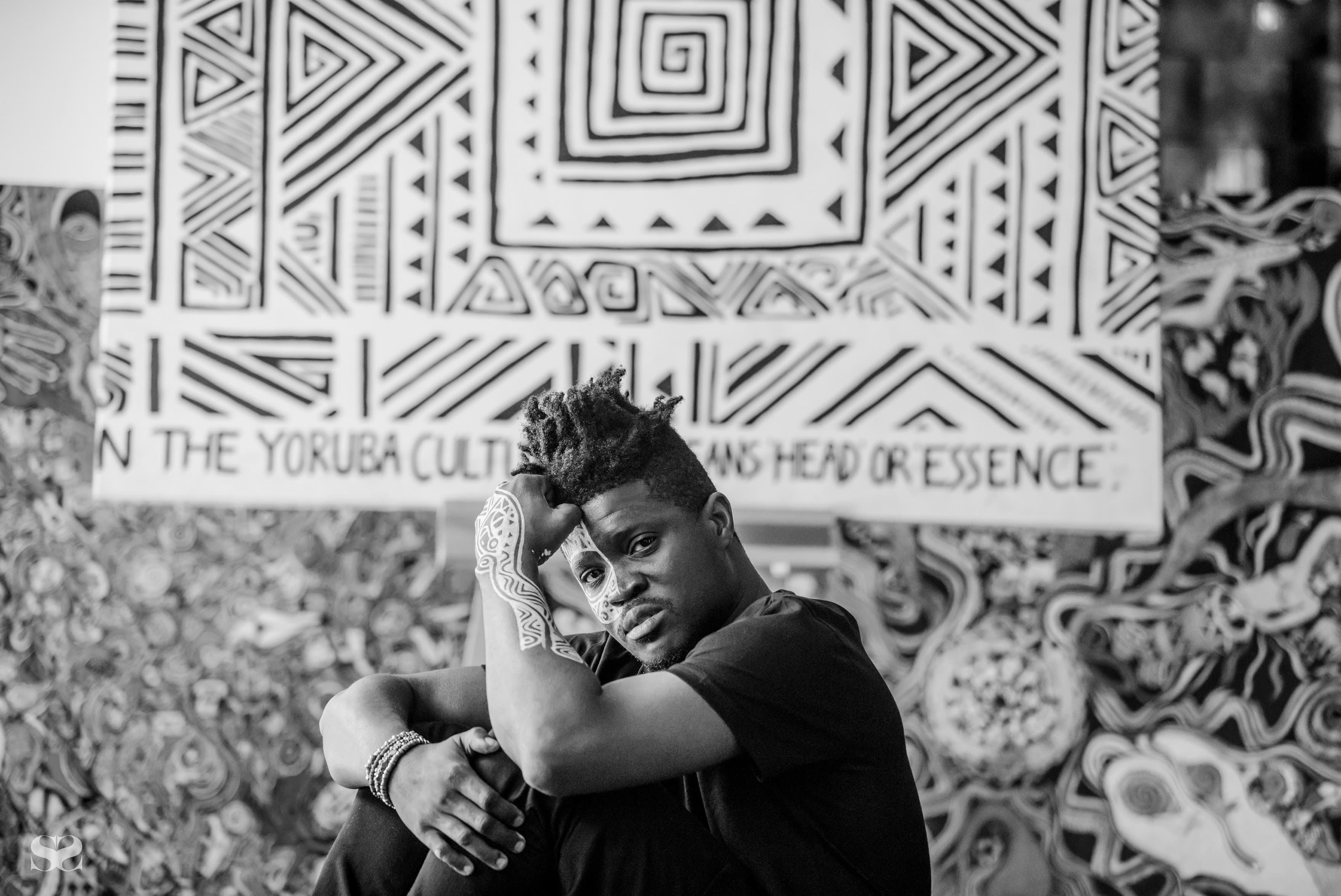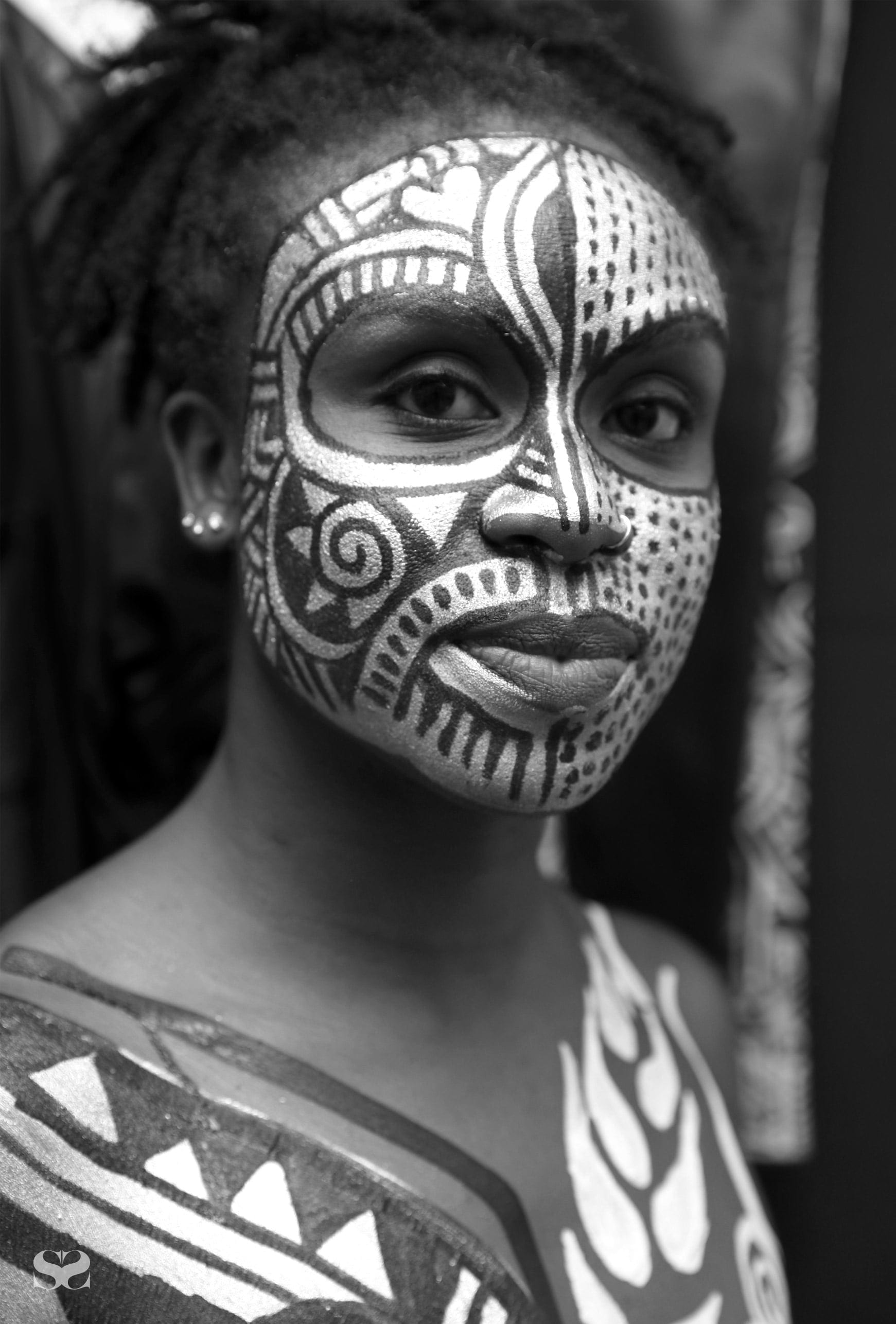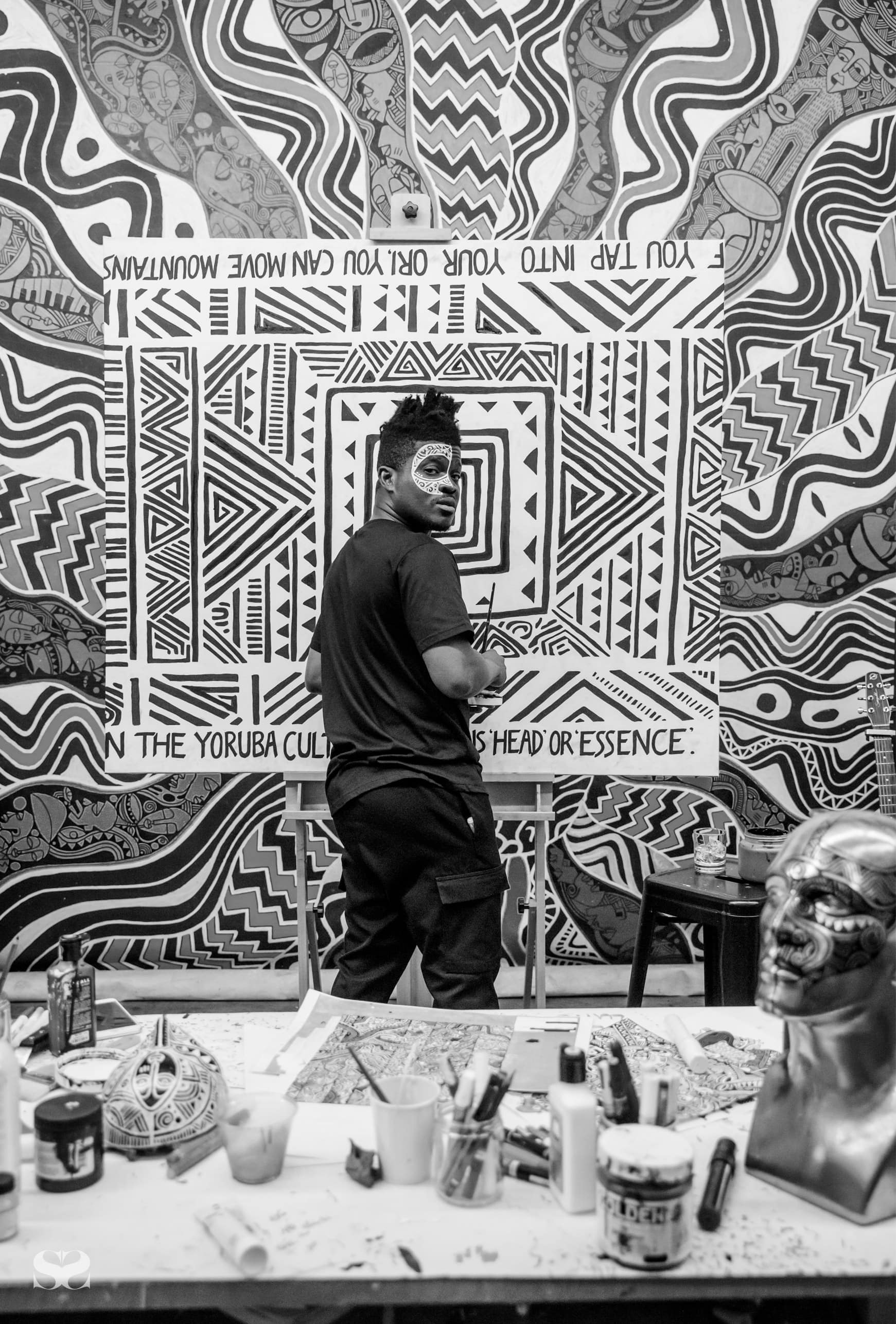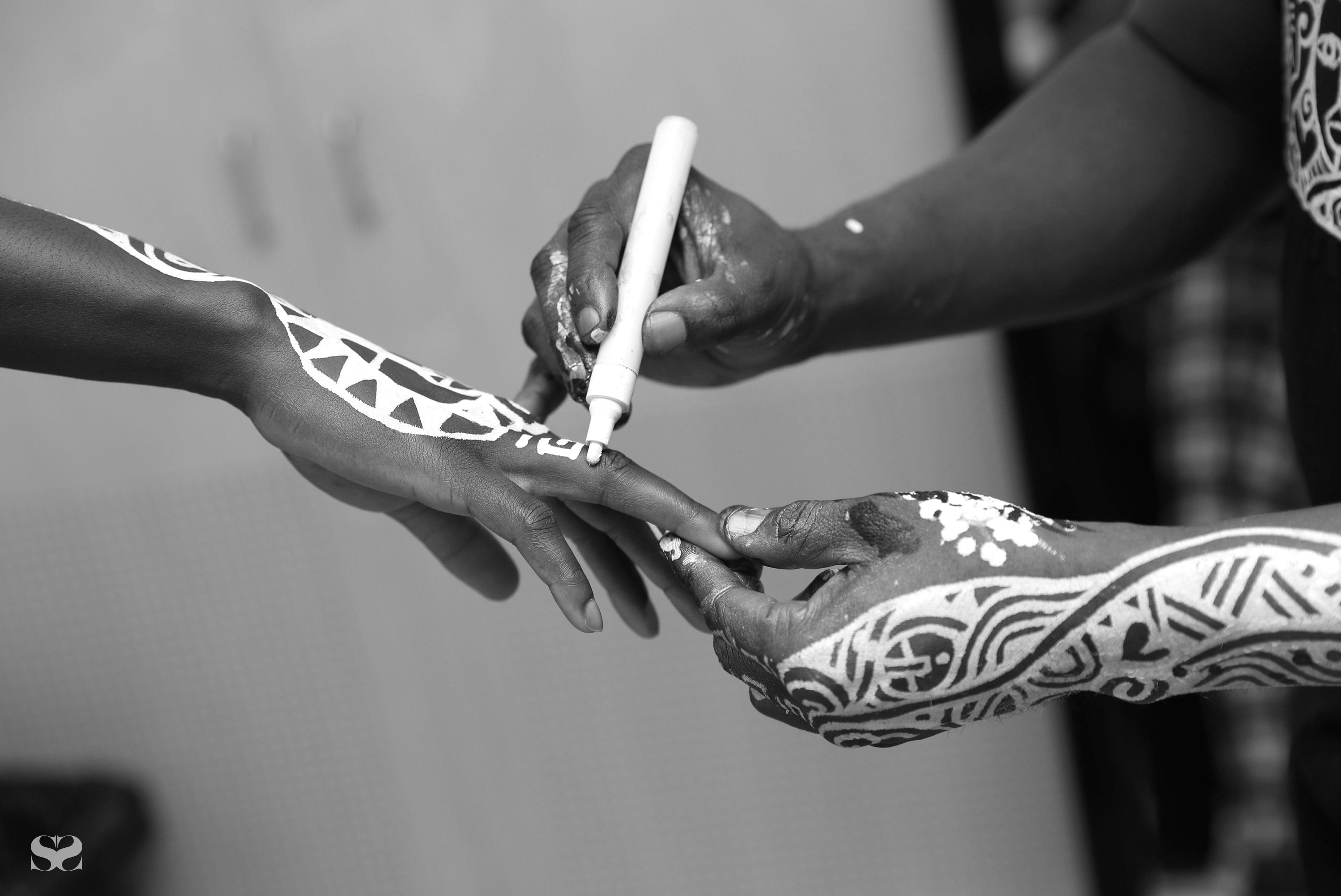
From a youth in Nigeria surrounded with Yoruba culture and mythology to time spent practicing as a human rights lawyer to finding success as a New York-based artist working with art institutions and iconic brands - not to mention Beyoncé - Laolu Senbanjo’s story is far from conventional. But then again, there is nothing conventional about his visual vocabulary, creative outlook, and the socially conscience art he has come to be known for.

Since relocating to New York in 2013, Senbanjo has gone from strength to strength. His unique artistic style has resulted in career-making commissions and partnerships, perhaps most notably his work with Beyoncé, which featured original art on the pop icon’s visual album, Lemonade. He has gained a reputation as an artist with a voice worth listening to and an instigator of conversations that matter.
It is mid-morning when we meet and Senbanjo is crouched down on the floor, painting on the skin of one of his muses in preparation for a grand soiree taking place at the Whitney Museum in the coming hours. The event is in celebration of Senbanjo’s latest project, a collaboration with Belvedere Vodka that sees the artist’s trademark Yoruba-influenced patterns and symbols emblazoned across the new limited-edition bottle. Whoever said men can’t multitask has clearly never met Senbanjo. While wielding a white marker, he talks in depth about the work at hand: the “Sacred Art of the Ori,” a Yoruba Ritual that uses skin as a canvas and connects artist and muse through mind, body, and soul. “Art shouldn’t just be something that’s in a museum,” he says. “I want art to be something you can carry around, wear on a shirt, put on your body, put on everything and make a statement.”
Through intricate patterns, lines, shades, and symbols in charcoal, white marker, and acrylic, Senbanjo crafts complex works that are visually striking and often unexpected owing to his use of vibrant colour combinations and unconventional canvases – he has been known to paint on everything from paper to fabric, glass to skin. His creative contributions are proof that at its most powerful, art can not only grant levity to some of life’s greatest tribulations but can incite tangible change, too. Take, for example, his latest collaboration, which supports the (RED) organization and the Global Fund to help eliminate HIV/AIDS in Africa. “I saw firsthand what the proceeds of this collaboration actually does,” he says. “This bottle gives back to the community that raised me.”
“Humans have been known to create art for centuries. Art has always been a tool for knowledge… Even back to the charcoal drawings on the walls, you see a lot of information there about how people lived, what they cared about – art helps us understand that.”

“As humans, we’re very visual beings. Beauty is something that humans appreciate all over the world.”

Senbanjo’s appreciation for his home country is ever present through his recurring incorporation of African themes and traditions in his creative output. His work remains true to his origins while at the same time, draws influence from his new home base. “When I moved to America, I didn’t even know I was black until people started calling me black,” he recalls. “I came to understand what it means to be black in America and that gave me a whole new awakening to the world, how I viewed the world and the different experiences I had, which in turn informed a lot of the art I created.”
Artist, humanitarian, change-maker, dream-weaver – Senbanjo is a man on a mission armed with the belief that anything is possible – even the prospect of one day seeing his art bound for outer space. “I really want to paint on a spaceship. Got to make that happen,” he says with unflinching resolve. For many, a seemingly impossible dream, for Senbanjo, a reality waiting to happen.
“When I moved to New York, I turned everything into my canvas.”



